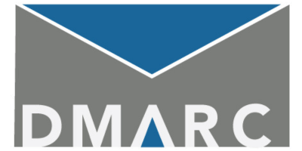
DMARC (Domain-based Message Authentication, Reporting & Conformance) is an email authentication, policy, and reporting protocol. It builds on the widely deployed SPF and DKIM protocols, adding linkage to the author (“From:”) domain name, published policies for recipient handling of authentication failures, and reporting from receivers to senders to improve and monitor the domain’s protection from fraudulent email.
DMARC is designed to fit into an organization’s existing inbound email authentication process. The way it works is to help email receivers determine if the purported message “aligns” with what the receiver knows about the sender. If not, DMARC includes guidance on how to handle the “non-aligned” messages. Because cyber security continues to be a top priority for businesses, DMARC adoption is on the rise for several good reasons.
Top 3 Reasons to Implement DMARC
- Brand protection: Stop bad actors from delivering malicious emails that appear to come from your brand’s domain and ensure every email received by your organization is authentic.
- Compliance: Increased focus and regulations on data protection and privacy, like GDPR and CCPA, mandate that customer data must be protected. As of February 2024, Google and Yahoo now require that bulk senders have DMARC in place. DMARC is projected to be adopted across various industries and potentially mandated through other regulatory bodies in the future.
- Cyber Insurance: Cyber insurance providers recognize the value of DMARC in reducing the risk of email compromise, domain impersonation, and other email-related risks. Therefore, organizations that have implemented DMARC effectively can demonstrate a proactive approach to email security, potentially resulting in better cyber insurance coverage and lower premiums.
DMARC Policy Levels
DMARC has multiple levels; it’s not a “turn-it-on and it’s complete” process. There are three different levels organizations can choose from:
- None Policy: Start gathering DMARC reports and analyzing data. Authentication reports are sent to your DMARC provider and offer visibility across your email. Once all sending sources have been identified and the correct authentication has been setup, you can move forward to the next step.
- Quarantine Policy: Put messages that fail the DMARC checks in quarantine. With a quarantine policy, recipients will place the message in the user’s spam folder, if the message is not DMARC compliant or not authenticated correctly. Authentication reports will continue to be received to monitor for failures.
- Reject Policy: Reject all messages that fail the DMARC checks. This is the ultimate enforcement, instructing email platforms to reject the messages at the gateway. The recipient will never receive the message, and the malicious source will be seen in the authentication reports. Additionally, the malicious source will receive a bounce report so that they can see the message was rejected and will stop using your domain to send messages.
Where DMARC Fits in Your Organization
Most likely, your organization utilizes spam, virus, and BEC protection, but to protect against external sources using the actual domain as opposed to lookalike domains, you need DMARC checks. To protect your organization’s domain(s), DMARC records are set up for outbound email and then verified during inbound email checks by your suppliers, partners and customers.
5 Ways Daymark Can Help Accelerate DMARC
DMARC can be difficult and time-consuming to implement without the right tools and expertise. Daymark consultants can provide the assistance and knowledge to help manage DMARC deployments, mitigate risk, and safely block malicious emails through these five steps:
- Onboarding - Here we will setup the account, add users and domains and help with DMARC record publishing.
- Governance - While waiting for aggregate reports, we’ll provide focused training on DMARC and DMARC Analyzer together with a project plan.
- Policy analysis – We’ll analyze the data, provide reporting, and identify actions to be taken before moving on to the next stage.
- Policy enforcement – A risk assessment is undertaken prior to moving to a quarantine policy to ensure no false positives will occur.
- Active monitoring - It is important to continually monitor your DMARC implementation, we’ll help with any new sources discovered.
An effective DMARC deployment allows you to control your domains and better govern who can and cannot send emails on your organization’s behalf. Contact us if you’re ready to get started.



